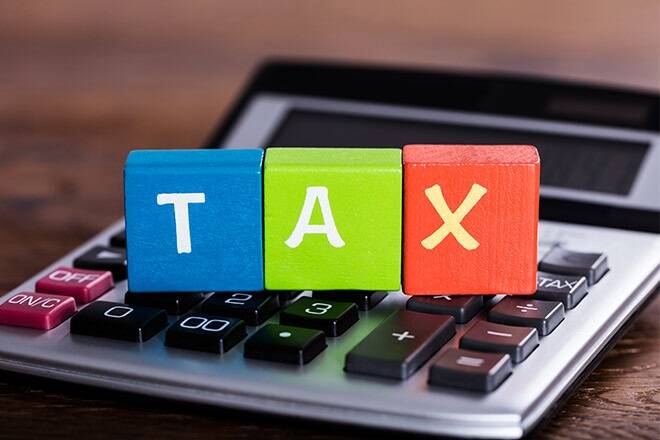This article is written by Gargi Lad. The article demonstrates in detail what Section 80EEA of the Income Tax Act, 1961, is and how an individual can claim a deduction under the same. It also delves into the nuances of who is eligible to claim the deductions and what are the compliances that an individual has to comply with.
Table of Contents
Introduction
In India, property holds immense value to people, emotionally as well as financially. However, with income just enough for sustenance, one finds themselves stuck in a rut, unable to invest their money in proper ways. In old-school ways, the only correct way to invest money was in property or gold; this is what the notion has been. In that scenario, the property is a huge investment and can take a middle-class individual his entire lifetime to afford one house. As for the security aspect, it’s a shelter in the literal sense, but in financial terms, it’s a secured investment that obviously will give returns in the long term.
To alleviate the financial strain on individuals investing in property, the government introduced tax deductions, particularly for home loans. When an individual puts his hard-earned money into an investment such as a house, he has very little residual income left for sustenance, and hence the concept of deductions for home loans was introduced. This encourages citizens to buy houses and have a secured investment. The current “Housing for All” scheme also focuses on the aspect of houses for the middle and lower class and encourages them to invest in properties by giving them such deductions.
Understanding the concept of income is important while discussing tax deductions, especially in relation to property and home loans. Under the Indian legal framework, income is a broad term which includes various sources which are outlined in the Income Tax Act, 1961.
Income under Income Tax Act, 1961
In general terms, income means any amount of property or income that is received over a particular period of time. Section 2(24) of the Income Tax Act, 1961, provides the definition of income. According to this provision, income includes any dividend, gain, or profit. It also includes any voluntary income that is received by a trust that was made for partly or wholly charitable or religious purposes. Further, any profits and gains of any business of insurance carried on by a mutual insurance company, banking company, or co-operative society are also counted as income under this Act.
Additionally, income is extended to include any gains derived from winning any amount from lotteries, crossword puzzles, card games, or horse races. Any game that has a nature of gambling or betting and produces any sort of monetary benefit will continue to fall under the category of income for this provision.
In order to promote the specific financial behaviour, the Income Tax Act provides certain deductions which help taxpayers lower their taxable income. One such important deduction has been provided under Section 80EEA of the Income Act, 1961.
Section 80EEA of Income Tax Act, 1961
Tax deductions are claims that reduce an individual’s taxable income, thereby lowering the amount of tax owed. These deductions can arise from various sources, like investments or expenses that the individual has incurred. It overall reduces the individual’s tax liability and helps save tax.
Tax deduction is often confused with tax exemption, as both are pointing towards reducing the tax liability of an individual. However, tax exemption includes the relief that the assessee doesn’t have to pay tax for a specific income or pay at a reduced rate of tax. Tax deductions are governmental tactics to lure the assessee or the taxpayer into participating in schemes that serve some purpose for society; they often lead to taxable income being reduced by spending on other government schemes.
Section 80EEA specifically provides for a tax deduction on home loans taken from financial institutions or banks. The deductions are given on the gross total tax liability of the individual and not on separate tax liabilities.
These are additional deductions provided under Section 24 that help in significantly reducing their tax liability and burden, thus encouraging more people to invest in properties. The motive behind introducing this provision was to encourage individuals to invest in the housing sector, help it grow, and also be a way of securing assets for many. The citizens could avail of the deductions starting from the financial year 2019-20 for house loans availed between 2019-22.
Example: If Mr. Ashish has availed a home loan in the year 2020, he is liable to get deductions on the same under Section 80EEA, subject to him being a first time home buyer and fulfilling all the essentials of this provision.
But if the home loan was availed in the year 2018, he would not be eligible for the deductions.

History and insertion of Section 80EEA of the Income Tax Act, 1961
The Finance Minister Nirmala Sitharaman in the Union budget of 2019 initiated the conversation regarding the insertion of such a provision that allows first-time homebuyers to reduce their tax liability by availing of deductions, wherein the main goal was to bring in affordability in the housing sector and encourage the citizens to invest by extending tax deductions for first-time homebuyers.
The older provision, that is, Section 80EE, provided for deductions up to Rs. 50,000 for loans availed between 1st April 2016 to 31st March 2017.
Section 80EEA deals with the deduction of interest on a loan that has been taken for house property. Section 80EEB deals with deduction with respect to the purchase of an electric vehicle. These two sections were added under the “Part C- Deductions and Taxable Total Income” segment of Income Tax Return Form-1 of Assessment Year 2020-21.
Section 80EEA was introduced in 2019, to encourage people to buy more real estate or houses and properties and to flourish the housing sector. The then finance minister was seeing a significant decline in the housing sector, so to create more awareness and to increase engagement with this sector, she introduced various tax deductions that the individuals could use as a tool and invest in this sector. A decline in the housing sector is not a good sign for the centre or the state government; hence, providing the individuals with such incentives encourages them to buy real estate and thus a good and sufficient housing sector.
Importance of Section 80EEA of the Income Tax Act, 1961
The provision of Section 80EEA of the Income Tax Act, 1961, provides an advantage to all the people who take loans for specific house property. This section allows a deduction for interest on a loan that has been taken for the same reason. This provision was introduced to provide more benefits on the already existing deduction benefits that had been given under Section 80EE of the Income Tax Act. This section also benefits two or more persons when a joint property loan has been taken.
Objective of Section 80EEA of the Income Tax Act, 1961
The main aim of bringing in this new section was to give opportunity to assessees who were unable to claim benefits under Section 80EE and were being deprived of the joys of buying a property merely due to financial reasons. The housing sector had seen a drop in the years when the finance minister, Ms. Nirmala Sitharaman, introduced this new section to encourage people to buy properties and invest in this sector. First-time home buyers often have a huge financial stress when buying properties; with this section in place and the deductions offered by this provision, they have a partial relief to their financial stress.
Essentials of Section 80EEA of the Income Tax Act, 1961
For an individual to claim a deduction under Section 80EEA of the Income Tax Act, 1961, one ought to fulfil these four essentials:
- Year of instituting a home loan: The individual should have taken the loan for the purpose of buying or constructing a house from a financial institution in the period between 1st April 2019 to 31st March 2020. The purpose is very important for taking the loan; if the purpose of taking the loan is not for acquiring a residential property, then deduction under this section will not be permitted.
- Value of the property for which the home loan is obtained: The stamp duty value of the property should be under 45 lakhs to seek a deduction under this section.
- Location of the property: If the property is situated in Mumbai, Hyderabad, Bangalore, Kolkata, Chennai, or Delhi NCR (limited to Delhi, Noida, Greater Noida, Ghaziabad, Gurgaon, and Faridabad), the carpet area must not exceed 60 square metres (645 square feet). In other locations, the property can be up to 90 square metres. This ensures the property is affordable real estate as per the definition of the finance bill.
- Assessee should be a first-time buyer: This means the assessee or individual shall not have any home or residential property in their name. The section lays down deductions only for an individual who, at the time of the loan being sanctioned, isn’t an owner of any other residential property.
Terms and conditions to claim deduction under Section 80EEA

There are certain conditions that have to be complied with in order to avail of the deduction under Section 80EEA of the Income Tax Act. The most important thing that has to be kept in mind is that only a deduction of a maximum amount of 1.5 lakhs can be availed under this section.
- Availed Home loan: The first criterion is that this section is only available for any individual who has taken a home loan for an affordable housing project.
- First property: This section is only available to individuals who are buying a house for the first time.
- Value of the property: It is to be kept in mind that the value of the property that is bought should not be more than 45 lakhs.
- Occupying of property: The property for which the home loan is taken shall not necessarily be self-occupied; if the borrower has given it out on rent, he can still claim deductions on the same.
- Interest Payment: The deduction that is available is only on the interest and not on the principal amount of the home loan availed.
- No carry forward: Any deduction that has not been claimed in the current year will not be transferred to the next year.
- Limitation: If any benefit has already been claimed under Section 80EE for the property, then the person cannot avail of the benefits of Section 80EEA of the Income Tax Act.
Documents needed to claim deduction under Section 80EEA
- Title documents: Documents like the sale deed would be of high importance and necessary to claim deductions under this provision.
- Bank details: The details as to from which bank the loan has been availed from and what is the loan account number assigned to the individual by the bank. This helps in keeping track of the repayment schedule and for verification purposes.
- Loan details: The duration of the loan and the amount of loan taken, including the principal amount and the interest amount to be paid every year.
Tax deductions of stamp duty and registration charges
Stamp duty charges incurred when buying a property are charged on the value of the property. They are also known as registration charges that a buyer may incur during the process of acquiring a property.
Such charges are an expense for the buyer and are usually a certain percentage of the actual value of the property. Hence the amount is significant. But Section 80EEA does not provide for deductions for stamp duty or registration charges; instead, one can claim the same under Section 80C of the Income Tax Act.
Maximum deduction under the same would be 1.5 lakhs; however, this deduction would not be for every year but only in the year that this charge or expense has been incurred.
Example: Ravi buys a property in 2019, for which he applies for a deduction under Section 80EEA and qualifies the criterion and fulfils all essentials, and thus is entitled to deductions under Section 80EEA.
He then wants to get additional deductions under Section 80C for the registration charges and stamp duty. He will be entitled to the deductions, but only in that year, as the expense was only for that year. Hence, one can claim deductions under Section 80EEA and 80C simultaneously.
In addition to these deductions, there are provisions related to income from house property under Section 24.
Section 24 of Income Tax Act, 1961
Section 24 talks about income derived from house property; it can be in the form of income from renting out the property or even from selling that property. Such property can be self occupied as well as let out or given for rental. For calculations, self-occupied property will be considered to have a 0 gross annual value on which municipal taxes are taxed. This gives rise to the Net Annual Value (NAV) of the property.
Moreover, deductions under Section 24(a) and 24(b) allow taxpayers to reduce their taxable income from property. A standard deduction of 30% of the NAV can be claimed under Section 24(a); this is a flat deduction allowed irrespective of the actual expenditure. While interest on a home loan or borrowing for acquiring a new property or for construction, if any, can be claimed under Section 24(b).
However, there are specific provisions on interest deductions for the properties under construction, which have been mentioned below.

Tax deductions for interest paid for properties under construction
Interest paid during both the pre-construction and post-construction periods is eligible for deductions under Section 24 of the Income Tax Act. The deductible interest on any loan that has been taken in a pre-construction period is allowed. However, the deduction for interest on a loan taken during the pre-construction period is only permitted starting from the year the construction is completed, not while it is in progress. This stipulates that in order to claim for a deduction on the interest of a loan taken for construction of a property, it will be granted only when the property is constructed and not while the property is being constructed.
Comparison between Section 80EEA and Section 24 of Income Tax Act, 1961
| Criteria | Section 80EEA | Section 24 |
| When does it apply? | Only home loans that have been taken from financial institutions are allowed. | Exemption is also allowed for loans that have been taken from friends and relatives. |
| Maximum deduction that has been allowed | Rs. 1,50,000. | Rs. 2,00,000 |
| Restrictions on time limit | There are certain conditions regarding stamp duty and time period when the loan has been taken that need to be fulfilled for availing the deduction. | No such conditions have been given. |
| Possession of the house | Any such condition has not been given under this provision. | One must have possession of the house. Rental properties have certain restrictions with respect to deductions. |
Calculation under Section 80EEA of Income Tax Act, 1961
According to this provision, an individual can claim a maximum deduction of 1.5 lakhs under this provision on a property that has a value of 45 lakhs or below. The property shall meet all the above conditions, like being the first home of the buyer.
Example 1
Ms. Anisha Malhotra took a home loan for her first home ever in the financial year 2019-2020 for a home having a stamp duty value of 40 lakh. She pays 4 lakhs as interest per year for the home loan.
Will she be qualified for deduction under Section 80EEA?
As she is entitled to deduction under Section 80EEA and Section 24 of the Income Tax Act, 1961, simultaneously, she will get a deduction of 200000 (2 lakhs) under Section 24; further, she can apply under Section 80EEA as the property is under 45 lakhs of value, wherein she will get a further 150000 (1.5 lakhs) of deduction.
What are the total deductions she is entitled to?
Total deduction is 2 lakhs + 1.5 lakhs = 3.5 lakhs.
Example 2
In case Ms. Anisha takes a home loan for her first home in the financial year 2019-2020 for a home having a stamp duty value of 32 lakh, she pays 3.2 lakhs as interest per year for the home loan.
How will the total deductions be calculated?
In this scenario, she is entitled to deduction under Section 80EEA and Section 24 simultaneously. She will get a deduction of Rs. 200000 (2 lakhs) under Section 24.
3.2 lakhs – 2 lakhs = 1.2 lakhs
Further, she can apply under Section 80EEA also, as the property is under 45 lakhs in value, wherein she is further entitled to get a deduction under the same, but since the residual interest amounts to 1.2 lakhs after deduction under Section 24, she gets a deduction of the entire 1.2 lakhs.
Total deductions:
2 lakh + 1.2 lakh = 3.2 lakhs.
Difference between Section 80EEA and Section 80EE of Income Tax Act, 1961

Section 80EE and Section 80EEA of the Income Tax Act can be availed by first-time homeowners. These sections provide them with an opportunity to deduct a specific amount from their taxable income. Section 80EEA was introduced with the aim of providing further benefits than the ones that have been provided under Section 80EE. However, there are certain differences between the two provisions:
| Criteria | Section 80EEA | Section 80EE |
| Aim of this provision | Deduction to first-time homeowners who cannot claim under 80EE | Deduction to homeowners |
| Maximum deduction allowed | Rs. 1,50,000 | Rs. 50,000 |
| Applicable to loans that have been taken from | Financial Year 2020-21 and 2021-22. | Financial Year 2013-14 to 2016-17. |
| Value of the property | The value of the house that is being purchased should not be more than Rs. 45 lakhs. | The value of the house that is being purchased should not be more than Rs. 50 lakhs. |
| Carpet area of the property | With respect to the carpet area of the property, it should not exceed 645 square feet and 968 square feet for metro areas and for other towns, respectively. | No specifications. |
| Maximum loan amount | No limit | 35 Lakhs |

Recent developments on Section 80EEA of Income Tax Act, 1961
The 2023 budget brought in a wave of sudden surprises for individuals, and a proposal was made regarding capital gains from the sale of a residential property. This proposal aimed to provide clarity on the calculation of capital gains on residential properties. As per the proposal, the cost of acquisition to calculate capital gains will no longer include deductions on the interest of home loans that were claimed during the holding period of the property. This provides clarity on the actual cost of acquiring the property and even on capital gains.
Conclusion
Section 80EEA of the Income Tax Act was introduced by the government in order to extend the deduction benefits given under Section 80EE of the Income Tax Act. These benefits were for the first house buyers. This section was introduced with the aim of encouraging more and more people to invest in the housing sector, which will also help the government in achieving their goal of ‘Housing for All’. The introduction of Section 80EEA of the Income Tax Act was expected to increase the accessibility of affordable housing to a large number of people. This provision that was introduced provides additional benefits to the ones that have been given in Section 24 of the Income Tax Act. Over the past few years, the housing sector has seen a rapid increase due to the availability of such deductions, which encourage more investment in properties.
Frequently Asked Questions (FAQs)
What is the meaning of financial institutions under Section 80EEA?
As per this section, a financial institution is any housing finance company or a banking company to which the Banking Regulations Act, 1949 applies.
What is an affordable housing property under Section 80EEA of the Income Tax Act, 1961?
As per this provision, any housing property having a stamp duty value under 45 lakhs is considered to be affordable housing property and hence qualifies for deductions.
Who can claim a deduction under Section 80EEA?
Any individual, resident, or non-resident of India who is a first-time home buyer of the property is entitled to deductions under this section. A Hindu Undivided Family or body of individuals is not entitled to claim these deductions as they do not fall under the category of individuals to be assessed as per this section. If there are joint owners of the property who have availed loans for the same property, they both are eligible to claim deduction under this section.
What is the significance of Section 80EEA of the Income Tax Act, 1961?
Section 80EEA can benefit an individual by providing first-time home buyers a deduction of Rs. 1.5 lakhs. This deduction is after the deduction that has been allowed under Section 24(b) of the Income Tax Act.
Who has the authority to invoke Section 80EEA of the Income Tax Act, 1961?
In case of a Hindu Undivided Family, a company, or a partnership firm cannot claim a deduction under this section. Hence, this section is only available only to individuals.
Is the individual entitled to deductions under Section 80EEA of the Income Tax Act if he/she has taken a home loan from family members?
No, only home loans sanctioned by financial institutions fall under this category. Any loan that is taken from family or friends will not be counted as a loan under this section for obtaining deductions.
What is the benefit that can be claimed in the case of a joint home loan?
Each borrower can avail a deduction of interest of Rs 2 lakhs under Section 24(b) for a joint home loan and also a deduction of Rs. 1.5 lakhs under Section 80EEA for first-time home buyers.
Does interest paid for properties under construction fall under the purview of Section 80EEA for tax deductions?
No. In order to claim for a deduction on the interest of a loan taken for construction of a property, it will be granted only when the property is constructed and not while the property is being constructed.
Why is the claim granted only after the property is constructed?
This is done to avoid any future misunderstandings; otherwise, people may take advantage of this deduction every year and never really build property out of that loan, stating it’s yet under construction.
Can a person claim deduction on a home loan taken for more than one house?
Section 80C and Section 80EEA of the Income Tax Act are different. Under Section 80C, there is no specific limit on the number of homes on which you repay your loan. Under this Section 80EEA tax deduction can be claimed to the extent of principal repaid. However, under Section 80EEA, more than one house is not allowed, and if a person is also involved in a second property, then he is ineligible for the same.
Can an individual seek a deduction under Section 80EEA of the Income Tax Act, 1961, every year?
Yes, every year he is able to seek the deductions until the entire loan amount is paid off.
Is deduction under both Section 80EE and 80EEA allowed?
No, deductions can only be taken under one of the above provisions.
As per deductions that have been given under Section 24 and Section 80EEA, can both deductions be claimed at the same time?
Yes, the deductions that have been given under the two sections can be claimed at the same time.
If the loan is availed for land or a plot, is the assessee eligible to claim for deductions?
No, the assessee can claim deductions only if the loan is availed for housing property, not for any land or plot.
Is there any income limit for availing deductions under Section 80EEA?
There is no ceiling limit to the income of the person who is claiming the deduction, i.e., the assessee.
References
- https://incometaxindia.gov.in/pages/acts/income-tax-act.aspx
- https://economictimes.indiatimes.com/wealth/personal-finance-news/affordable-housing-tax-relief-budget-2024-expected-to-bring-back-deduction-on-home-loan-interest-payment-other-measures/articleshow/111662397.cms?from=mdr
Students of Lawsikho courses regularly produce writing assignments and work on practical exercises as a part of their coursework and develop themselves in real-life practical skills.
LawSikho has created a telegram group for exchanging legal knowledge, referrals, and various opportunities. You can click on this link and join:
Follow us on Instagram and subscribe to our YouTube channel for more amazing legal content.
 Serato DJ Crack 2025Serato DJ PRO Crack
Serato DJ Crack 2025Serato DJ PRO Crack










 Allow notifications
Allow notifications



